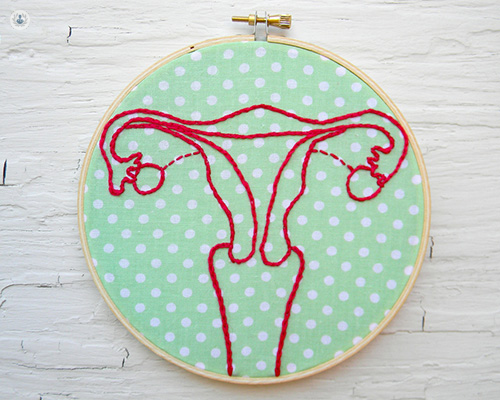Endometrial cancer
Mr Rahul Nath - Obstetrics & gynaecology
Created on: 09-21-2015
Updated on: 07-27-2023
Edited by: Conor Lynch
What is endometrial cancer?
Endometrial cancer begins in the layer of the cells that form the lining of the uterus, which is the organ where foetal development (reproduction) occurs. It is sometimes known as uterine cancer. Endometrial cancer is usually detected early because it produces abnormal vaginal bleeding.
Currently, the exact cause is not known but it may be related to increased levels of oestrogen. If detected in the early stages, the removal of the uterus often cures the disease.

What are the symptoms of endometrial cancer?
The symptoms present in endometrial cancer are abnormal vaginal bleeding after menopause, lower abdominal pain or cramping in the pelvis, and white vaginal discharge.
What are the risk factors for endometrial cancer?
As it is not clear what causes endometrial cancer, there are certain risk factors that can increase the chances of developing it. These include:
- High levels of the hormone oestrogen, which can be caused by obesity
- Never having been pregnant
- Older age
- Hormone therapy for breast cancer
- Having started menstruation at an early age
How can endometrial cancer be prevented?
The risks of endometrial cancer can be reduced if you keep your body weight in a normal healthy range, discuss the risk of hormone replacement therapy (HRT) after menopause with your doctor, and consider taking birth control pills.
How is endometrial cancer treated?
Endometrial cancer is most commonly treated with removal of the womb (hysterectomy). In the early stages of the disease, the procedure can cure womb cancer, however, it means that you will not be able to get pregnant in the future. Radiotherapy and chemotherapy are also given too.
For women who are younger and who would still like to have children, a type of hormone therapy (progestogen) is an option, which lowers the hormone levels in the body.












